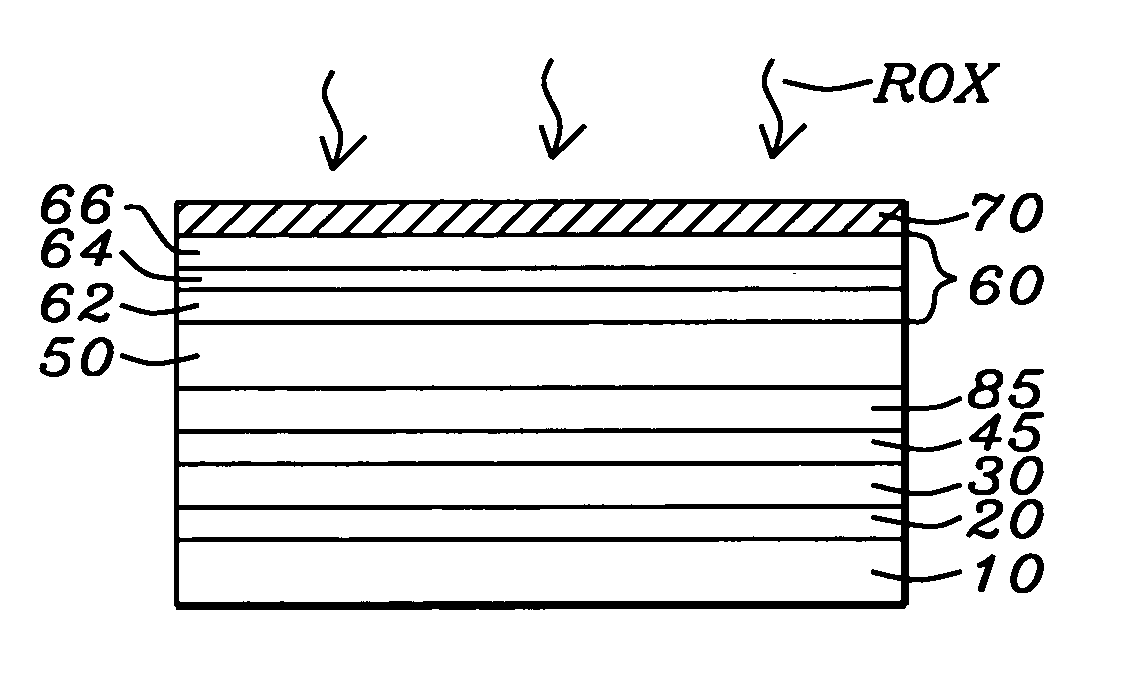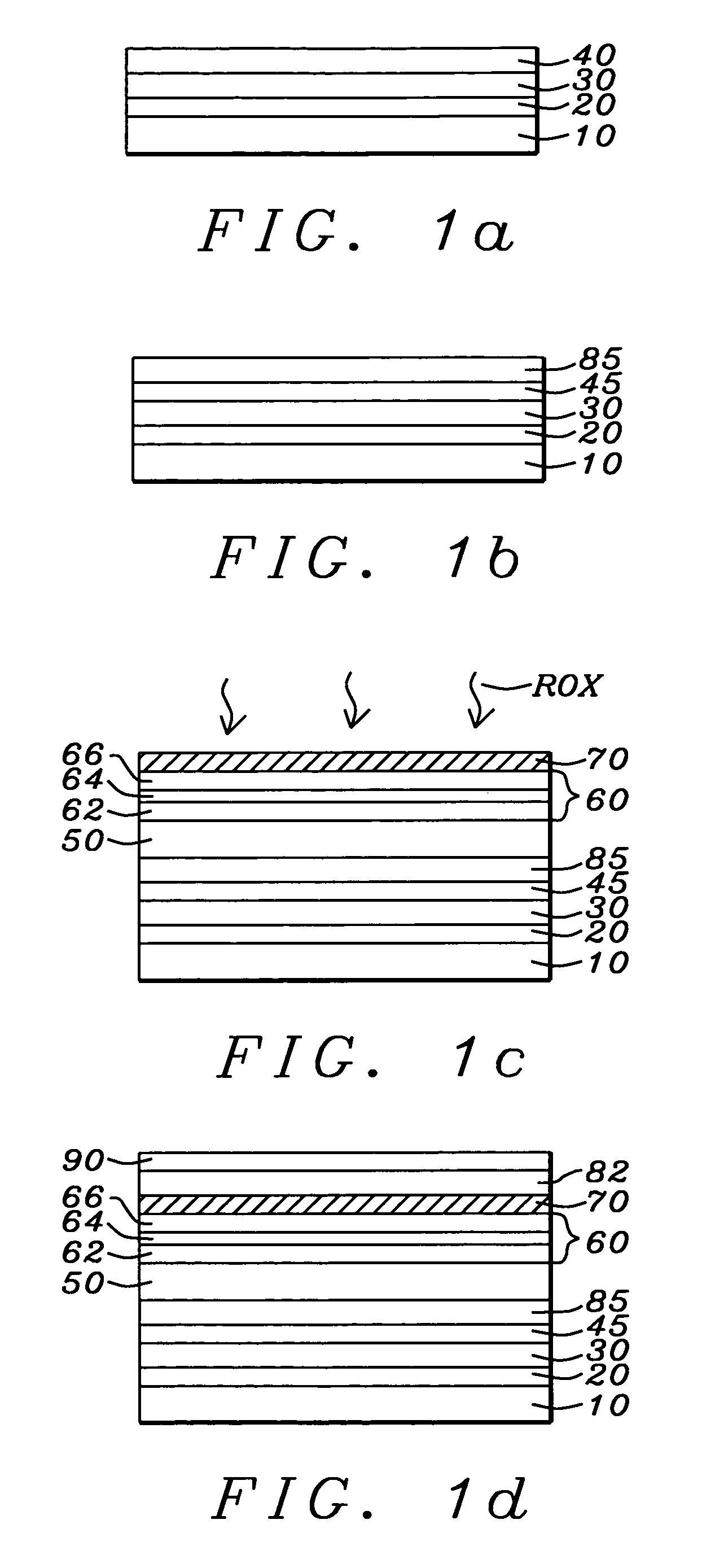Method of forming a magnetic tunneling junction (MTJ) MRAM device and a tunneling magnetoresistive (TMR) read head
- Summary
- Abstract
- Description
- Claims
- Application Information
AI Technical Summary
Benefits of technology
Problems solved by technology
Method used
Image
Examples
first embodiment
[0036]The present invention, in a first preferred embodiment, is a method of forming an MTJ MRAM by the use of a novel NiCr seed layer formed on a sputter-etched Ta layer so that the subsequently formed tunneling junction layer is ultra-thin and smooth and has a high breakdown voltage. In a second preferred embodiment the present invention is a method of forming a TMR read head having a high GMR ratio, low junction resistance and high tunneling layer breakdown voltage, using the novel NiCr seed layer formed on a sputter-etched Ta layer.
[0037]Referring now to FIG. 1a, there is seen in a schematic cross section an initial stage of a preferred embodiment of the invention, the formation of a single MRAM element, which can be a part of an array of such elements. It is to be understood that in the embodiments to be disclosed in what follows, all layer depositions take place in an ultra- high vacuum system suitable for depositing thin layers by sputtering. In these embodiments the system w...
second embodiment
[0043]Referring now to FIG. 2a, there is seen a schematic cross-sectional view of the initial steps of a second embodiment of the present invention, which is the formation of a TMR read sensor. As in the MRAM formation described above, the TMR read sensor is also formed as a series of layers in the sputtering chamber of an ultra-high vacuum sputtering system. It is to be noted, although it is known to those skilled in the art, that the tunneling magnetic junction configuration, when used to form an MRAM element as in the first embodiment, is formed between a word line and a bit line, insulated from the former and contacting the latter, whereas the tunneling magnetic junction configuration, when used to form a magnetoresistive read sensor, ie a TMR sensor, is formed between upper and lower magnetic shields, contacting them both since they serve as conducting leads.
[0044]Referring again to FIG. 2a, there is first seen a substrate (10), which in this embodiment could be a lower shield / ...
PUM
| Property | Measurement | Unit |
|---|---|---|
| Fraction | aaaaa | aaaaa |
| Pressure | aaaaa | aaaaa |
| Power | aaaaa | aaaaa |
Abstract
Description
Claims
Application Information
 Login to View More
Login to View More - R&D
- Intellectual Property
- Life Sciences
- Materials
- Tech Scout
- Unparalleled Data Quality
- Higher Quality Content
- 60% Fewer Hallucinations
Browse by: Latest US Patents, China's latest patents, Technical Efficacy Thesaurus, Application Domain, Technology Topic, Popular Technical Reports.
© 2025 PatSnap. All rights reserved.Legal|Privacy policy|Modern Slavery Act Transparency Statement|Sitemap|About US| Contact US: help@patsnap.com



